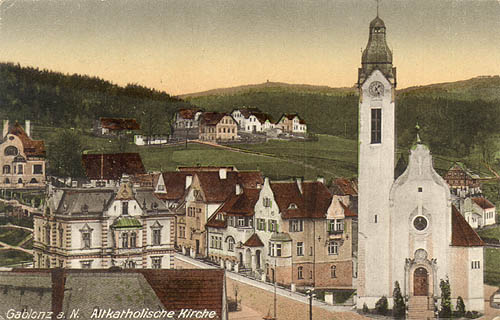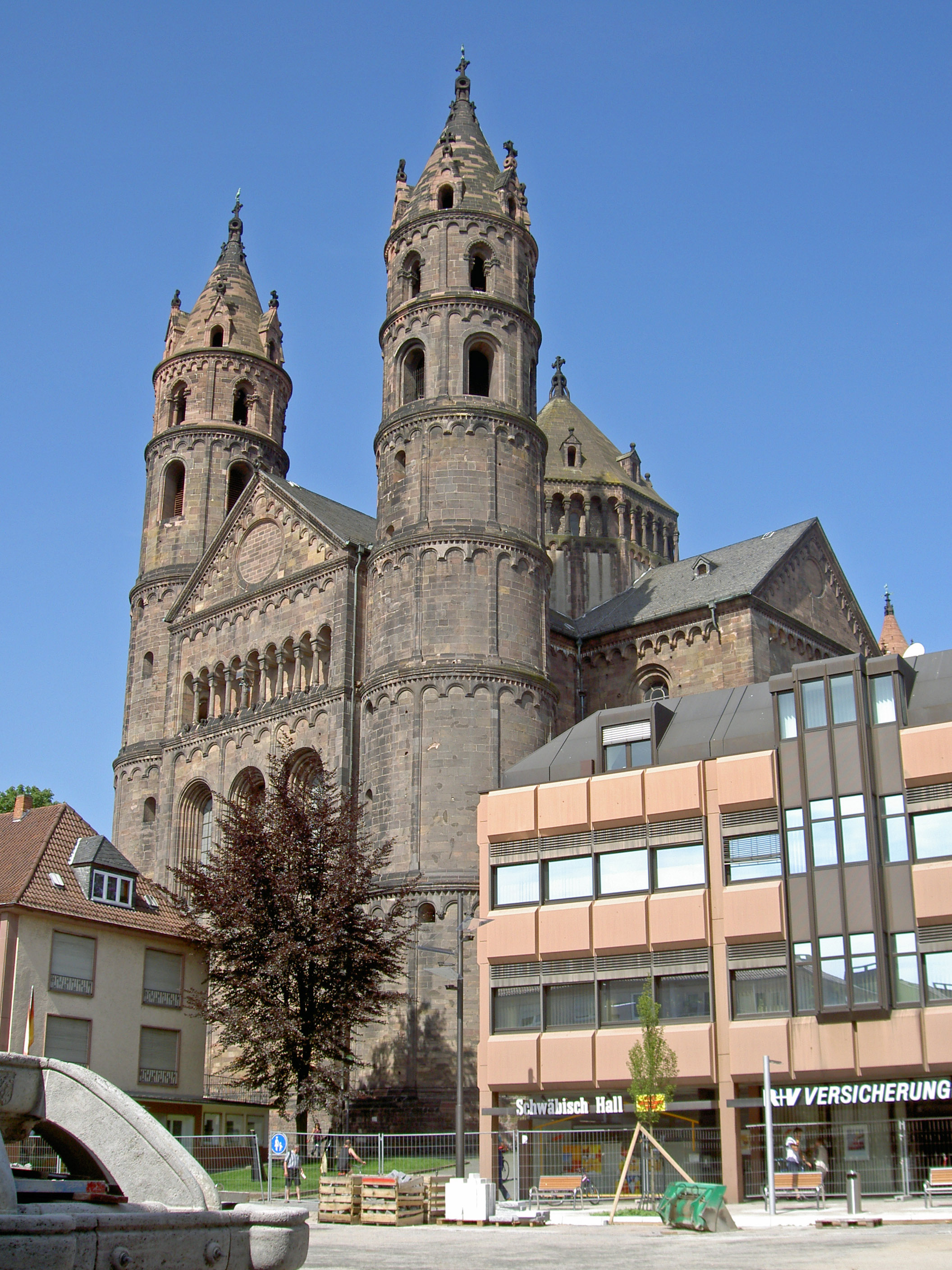|
Dittelsheim-Heßloch
Dittelsheim-Heßloch (or ''Dittelsheim-Hessloch'') is an ''Ortsgemeinde'' – a municipality belonging to a ''Verbandsgemeinde'', a kind of collective municipality – in the Alzey-Worms district in Rhineland-Palatinate, Germany. Geography Location The municipality lies in Rhenish Hesse, and is a wine village in the Wonnegau. It belongs to the ''Verbandsgemeinde'' of Wonnegau, whose seat is in Osthofen. History Werner II of Bolanden was enfeoffed about 1190 with the village of Dittelsheim by the Counts of Katzenelnbogen. Bit by bit, the Electorate of the Palatinate acquired the parts formerly held by the Raugrafen noble family and the Old Bolanden line, and those held by the von Wachenheims and the von Dalbergs (15th to early 17th century). During the Middle Ages, the Lords of Dalberg held the ''Vogtei''. The municipality of Dittelsheim-Heßloch came into being on 7 June 1969 through the merger of the two municipalities of Dittelsheim and Heßloch. Politics Municipal ... [...More Info...] [...Related Items...] OR: [Wikipedia] [Google] [Baidu] |
Wonnegau
Wonnegau is a ''Verbandsgemeinde'' ("collective municipality") in the district Alzey-Worms, Rhineland-Palatinate, Germany. It takes its name from the larger historical area Wonnegau, which covers the southern part of Rhenish Hesse. The seat of the ''Verbandsgemeinde'' is in Osthofen. The ''Verbandsgemeinde'' Wonnegau consists of the following ''Ortsgemeinden'' ("local municipalities"): # Bechtheim # Bermersheim # Dittelsheim-Heßloch # Frettenheim # Gundersheim # Gundheim # Hangen-Weisheim # Hochborn # Monzernheim # Osthofen # Westhofen Westhofen is an ''Ortsgemeinde'' – a municipality belonging to a ''Verbandsgemeinde'', a kind of collective municipality – in the Alzey-Worms district in Rhineland-Palatinate, Germany. Geography Location Westhofen lies between Worms (r ... Verbandsgemeinde in Rhineland-Palatinate {{AlzeyWorms-geo-stub ... [...More Info...] [...Related Items...] OR: [Wikipedia] [Google] [Baidu] |
Alzey-Worms
Alzey-Worms () is a district in Rhineland-Palatinate, Germany. It is bounded by (from the east and clockwise) the district Groß-Gerau (Hesse), the city of Worms and the districts of Bad Dürkheim, Donnersbergkreis, Bad Kreuznach and Mainz-Bingen. History The territory was in Roman times part of the province of Germania Superior. The towns of Worms and Alzey go both back to Roman military camps. In medieval times the region was part of the Electorate of the Palatinate. After the French occupation (1797–1814) it was incorporated into the Grand Duchy of Hesse and formed a part of its province Rhenish Hesse. Two districts named Alzey and Worms were established in 1835. In the reorganisation of the districts of Rhineland-Palatinate in 1969 the new district of Alzey-Worms was formed by merging parts of the former districts. Geography The district is named after the city of Worms (which is neighboring, but not belonging to the district) and the town of Alzey (which is the sea ... [...More Info...] [...Related Items...] OR: [Wikipedia] [Google] [Baidu] |
Guntersblum
Guntersblum is an ''Ortsgemeinde''– a municipality belonging to a ''Verbandsgemeinde'', a kind of collective municipality – in the Frankfurt/Rhine-Main Metropolitan Region in the Mainz-Bingen district in Rhineland-Palatinate, Germany. Geography Location Guntersblum lies on the Rhine’s left bank between Mainz and Worms, right on the Mainz– Ludwigshafen railway line, and roughly 25 km south of Mainz. The municipality’s total area is 1 668 ha, 1 373 ha of which is given over to agriculture and forestry, and 550 ha of this is used for winegrowing. Winegrowing areas include Guntersblumer Vögelsgärten and Oppenheimer Krötenbrunnen while individual vineyards are Steinberg, Authental, Steigterassen, Bornpfad, Kreuzkapelle, Eiserne Hand, St. Julianenbrunnen and Sonnenhang. History 9th to 10th century Between 830 and 850 Guntersblum, had its first documentary mention as ''Chunteres Frumere'' in the Lorsch codex: a kingly bondsman had to ... [...More Info...] [...Related Items...] OR: [Wikipedia] [Google] [Baidu] |
Municipalities Of Germany
MunicipalitiesCountry Compendium. A companion to the English Style Guide European Commission, May 2021, pages 58–59. (german: Gemeinden, ) are the lowest level of official territorial division in . This can be the second, third, fourth or fifth level of territorial division, depending on the status of the municipality and the '''' (federal state) it ... [...More Info...] [...Related Items...] OR: [Wikipedia] [Google] [Baidu] |
Baroque Architecture
Baroque architecture is a highly decorative and theatrical style which appeared in Italy in the early 17th century and gradually spread across Europe. It was originally introduced by the Catholic Church, particularly by the Jesuits, as a means to combat the Reformation and the Protestant church with a new architecture that inspired surprise and awe. It reached its peak in the High Baroque (1625–1675), when it was used in churches and palaces in Italy, Spain, Portugal, France, Bavaria and Austria. In the Late Baroque period (1675–1750), it reached as far as Russia and the Spanish and Portuguese colonies in Latin America. About 1730, an even more elaborately decorative variant called Rococo appeared and flourished in Central Europe. Baroque architects took the basic elements of Renaissance architecture, including domes and colonnades, and made them higher, grander, more decorated, and more dramatic. The interior effects were often achieved with the use of ''quadratura'', or ... [...More Info...] [...Related Items...] OR: [Wikipedia] [Google] [Baidu] |
Winegrowing
Viticulture (from the Latin word for ''vine'') or winegrowing (wine growing) is the cultivation and harvesting of grapes. It is a branch of the science of horticulture. While the native territory of ''Vitis vinifera'', the common grape vine, ranges from Western Europe to the Persian shores of the Caspian Sea, the vine has demonstrated high levels of adaptability to new environments, hence viticulture can be found on every continent except Antarctica. Duties of the viticulturist include monitoring and controlling pests and diseases, fertilizing, irrigation, canopy management, monitoring fruit development and characteristics, deciding when to harvest, and vine pruning during the winter months. Viticulturists are often intimately involved with winemakers, because vineyard management and the resulting grape characteristics provide the basis from which winemaking can begin. A great number of varieties are now approved in the European Union as true grapes for winegrowing and viticultu ... [...More Info...] [...Related Items...] OR: [Wikipedia] [Google] [Baidu] |
Guggenmusik
Guggenmusik (also known as "Guggemoseg", "Guuggemusig" or "Chatzemusig") is a term widely used in the Alemannic German, Alemannic region of Switzerland, Austria and southern Germany to designate both a Carnival marching band and the type of music it plays. Definition Guggenmusik is played during ''Fasnacht'', the Swabian-Alemannic carnival season (Swabian–Alemannic Fastnacht), which is celebrated in various localities as the Basler Fasnacht, ''Luzerner Fasnacht'', Eis-zwei-Geissebei in Rapperswil, and many other terms. The most common explanation of the word "Gugge" is that it may derive from the Alemannic German, Alemannic "Sack/Tüte", meaning "bag". Other unsourced explanations include the word used for a small children's trumpet, a (Swiss German) word for "scream", or the cuckoo's call. A "Guggemusik" band thus refers to a group of people playing loud music and typically wearing costumes and masks in a uniform style. It is a strongly rhythmic music of distinctive style pl ... [...More Info...] [...Related Items...] OR: [Wikipedia] [Google] [Baidu] |
Artistic Cycling
Artistic cycling is a form of competitive indoor cycling in which athletes perform tricks (called exercises) for points on specialized, fixed-gear bikes in a format similar to ballet or gymnastics. The exercises are performed in front of judges in five-minute roundsAbout Indoor Cycling Artistic Cycling, UCI, Retrieved 18 April 2021 by singles, pairs, four- or six-person teams. History The first unofficial world championships in artistic cycling was held in 1888 by Swiss-American Nicholas Edward Kaufmann and was largely a publicity stunt to showcase his trick bicycling. The first official world championships were held for men in 1956 and for women in 1970.Bikes The bicycles used for artistic cycling are a form of |
Old Catholic Church
The terms Old Catholic Church, Old Catholics, Old-Catholic churches or Old Catholic movement designate "any of the groups of Western Christians who believe themselves to maintain in complete loyalty the doctrine and traditions of the undivided church but who separated from the see of Rome after the First Vatican council of 1869–70". The expression Old Catholic has been used from the 1850s by communions separated from the Roman Catholic Church over certain doctrines, primarily concerned with papal authority and infallibility. Some of these groups, especially in the Netherlands, had already existed long before the term. These churches are not in full communion with the Holy See. Member churches of the Union of Utrecht of the Old Catholic Churches (UU) are in full communion with the Evangelical Lutheran Church of Sweden and the Anglican Communion; many members of the Union of Utrecht of the Old Catholic Churches hold membership in the World Council of Churches. The term "O ... [...More Info...] [...Related Items...] OR: [Wikipedia] [Google] [Baidu] |
Crusades
The Crusades were a series of religious wars initiated, supported, and sometimes directed by the Latin Church in the medieval period. The best known of these Crusades are those to the Holy Land in the period between 1095 and 1291 that were intended to recover Holy Land, Jerusalem and its surrounding area from Muslim conquests, Islamic rule. Beginning with the First Crusade, which resulted in the recovery of Jerusalem in 1099, dozens of Crusades were fought, providing a focal point of European history for centuries. In 1095, Pope Pope Urban II, Urban II proclaimed the First Crusade at the Council of Clermont. He encouraged military support for List of Byzantine emperors, Byzantine emperor Alexios I Komnenos, AlexiosI against the Seljuk Empire, Seljuk Turks and called for an armed pilgrimage to Jerusalem. Across all social strata in western Europe, there was an enthusiastic response. The first Crusaders had a variety of motivations, including religious salvation, satisfying feud ... [...More Info...] [...Related Items...] OR: [Wikipedia] [Google] [Baidu] |
Worms, Germany
Worms () is a city in Rhineland-Palatinate, Germany, situated on the Upper Rhine about south-southwest of Frankfurt am Main. It had about 82,000 inhabitants . A pre-Roman foundation, Worms is one of the oldest cities in northern Europe. It was the capital of the Kingdom of the Burgundians in the early fifth century, hence is the scene of the medieval legends referring to this period, notably the first part of the ''Nibelungenlied''. Worms has been a Roman Catholic bishopric since at least 614, and was an important palatinate of Charlemagne. Worms Cathedral is one of the imperial cathedrals and among the finest examples of Romanesque architecture in Germany. Worms prospered in the High Middle Ages as an imperial free city. Among more than a hundred imperial diets held at Worms, the Diet of 1521 (commonly known as ''the'' Diet of Worms) ended with the Edict of Worms, in which Martin Luther was declared a heretic. Worms is also one of the historical ShUM-cities as a cultural ... [...More Info...] [...Related Items...] OR: [Wikipedia] [Google] [Baidu] |
Alsheim
Alsheim is an ''Ortsgemeinde'' – a municipality belonging to a ''Verbandsgemeinde'', a kind of collective municipality – in the Alzey-Worms district in Rhineland-Palatinate, Germany. History Alsheim is mentioned in the Wormser wall-building ordinance from around 900 as one of the places that shared responsibility for maintaining the city wall of Worms.C. Van De Kieft and J. F. Niermeyer, eds. (1967), ''Elenchus fontium historiae urbanae'' (Leiden: E. J. Brill), pp. 43–44. Geography Location The municipality lies in Rhenish Hesse and belongs to the ''Verbandsgemeinde'' of Eich, whose seat is in the like-named municipality. The village, along with the hamlet of Hangen-Wahlheim, lies amidst vineyards at the foot of the Rhenish-Hessian Rhine terraces between Mainz and Worms. Favoured as it is by its central location between the Frankfurt Rhine Main Region and the Rhine-Neckar conurbations, Alsheim has for a long time been growing into a markedly residential community. Ne ... [...More Info...] [...Related Items...] OR: [Wikipedia] [Google] [Baidu] |






